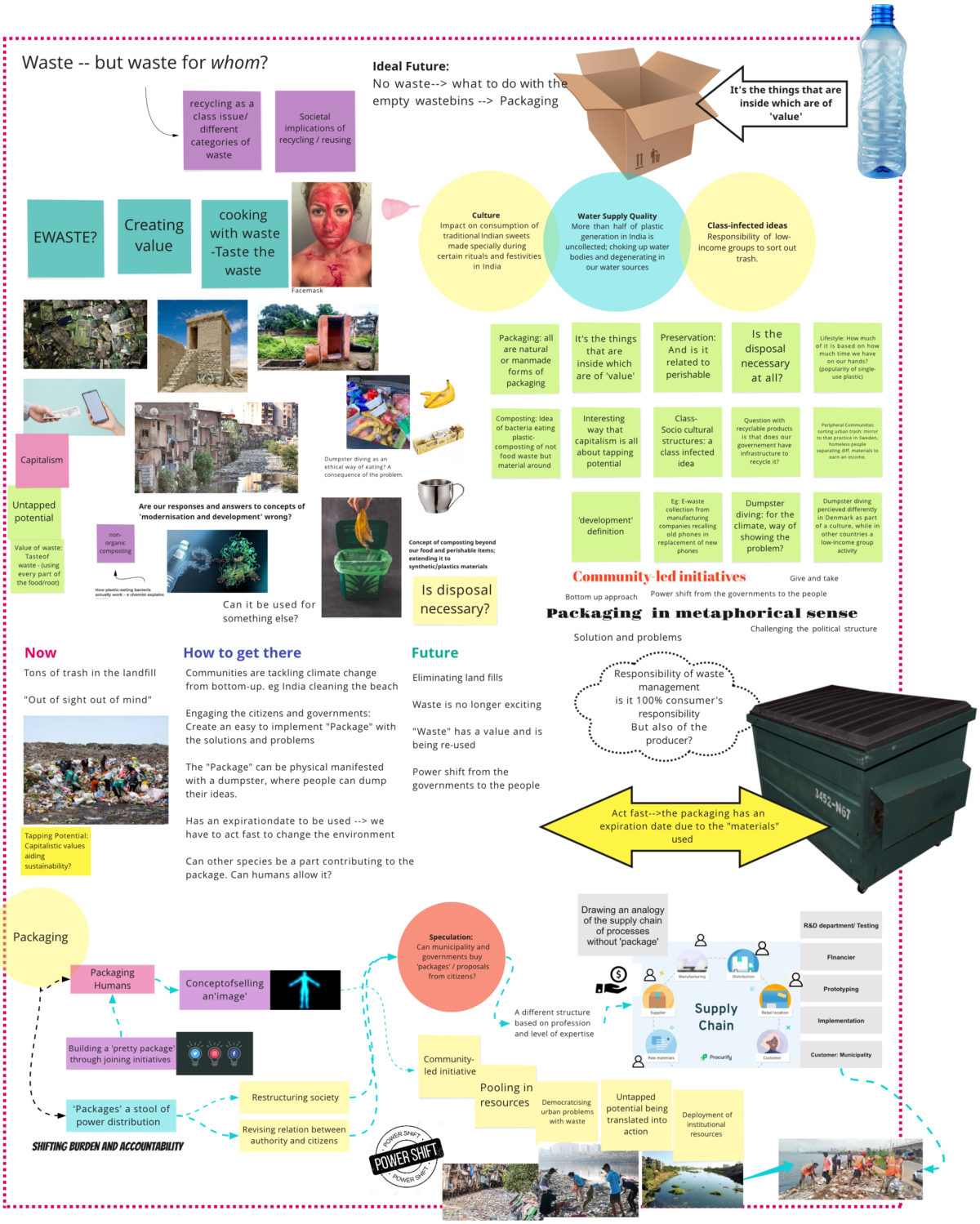Our discussion began with the realisation that everyone in our group had brought boundary objects that were containers of some sort. From (menstrual) cups to chocolate wrappers and banana skins, some objects were trying to solve the problem of waste and others were creating it, but all of them were packaging.
While the packaging itself is often disposed of, we only tend to package things that we value. This then begs the question, value for whom? We talked about how these values of waste differ. Menstrual blood, composting toilets and e-waste were all brought up as examples showing that the idea of waste is subjective.
“We don’t think of the banana farmer as responsible for the banana peel”
– Participant during discussion
Disposal also has differing value across classes in society. Dumpster diving may be considered hip, an activist gesture to bring attention to climate change issues. Celebrities may attach themselves to such climate-actions to achieve a certain kind of glamour. The packaging becomes metaphorical, part of a brand experience. However, this glamour and hipness does not extend to ragpickers, or other communities on the periphery, living on others’ waste.
To address this issue we propose presenting solutions as ‘packages’ for a democratic form of governance. These packages are plans of action to deal with the problems of disposal in a way that contextualises them in respect to the culture and environment, originating from the communities involved. We present these packages to (municipal) governments for implementation, to translate untapped potential into action, and restructure society. The ‘package’ is convenient, but it also has an expiration date, and must be acted upon, as time is running out.

The ‘more-than-human’ aspect in this plan for action may not be easily spotted, but ‘more-than-human’ also implies ‘less-than-human’. Those who are human but are considered ‘less’ than due to their association with waste. When talking about disposal we must consider not just what is considered disposable but also whom.
